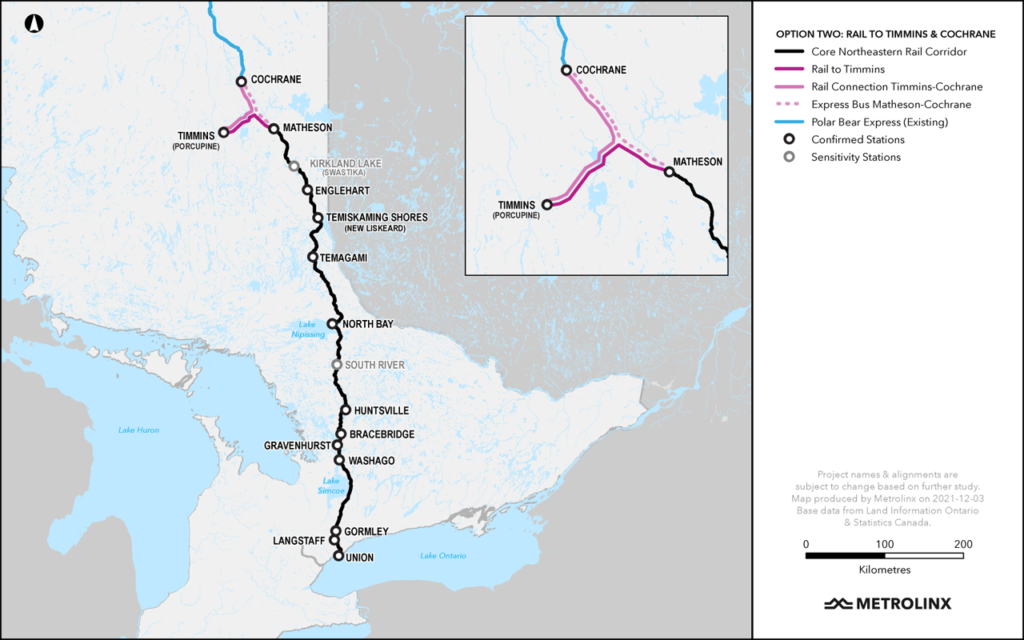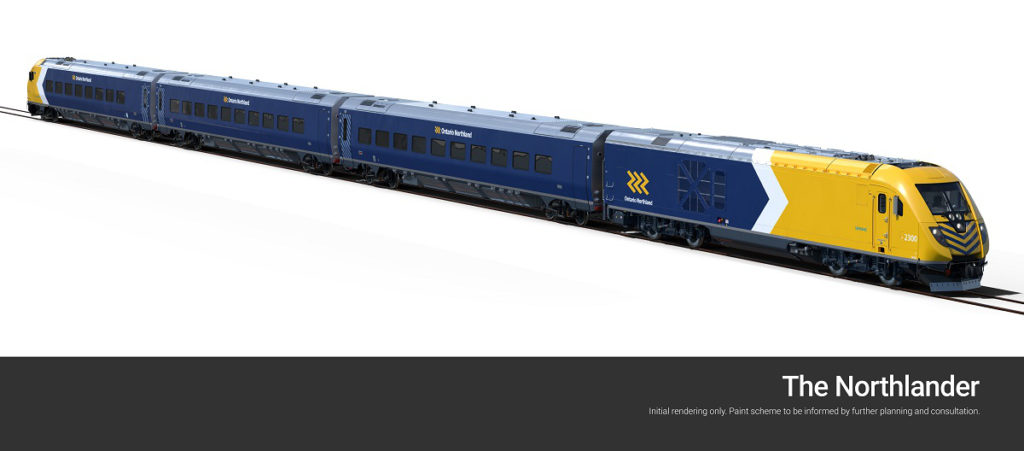
Ontario Advances Northlander Service Revival
Written by Marybeth Luczak, Executive Editor
“Have you heard? Passenger rail is one step closer to returning to northeastern Ontario!” Ontario Northland wrote in a Dec. 15 Twitter post announcing the revival of Northlander service and the Province’s purchase of three Siemens Mobility trainsets to serve it. (Photograph Courtesy of Siemens Mobility)
The Ontario government on Dec. 15 reported that it will spend C$139.5 million to purchase three Siemens Mobility Ltd. trainsets as part of its plan to reinstate Northlander passenger rail service between Toronto and Timmins by the mid-2020s.
The move follows the government’s April 2022 investment of C$75 million to revive the service and release of an Updated Initial Business Case (UIBC) to advance planning of the preferred route. That route runs from Toronto to Timmins with a rail connection to Cochrane. (Cochrane would provide a connection to Polar Bear Express service to Moosonee.) It offers 16 stops: Toronto (Union Station), Langstaff, Gormley, Washago, Gravenhurst, Bracebridge, Huntsville, South River, North Bay, Temagami, Temiskaming Shores, Englehart, Kirkland Lake (Swastika), Matheson, Timmins and Cochrane (see map below).

Ontario Northland’s Northlander Passenger Train—which ran between Cochrane, North Bay and Toronto—was discontinued in 2012. Ontario Northland currently operates four buses daily between Toronto and North Bay, and one to two buses daily from North Bay to Timmins and Cochrane.
The rail corridor between Toronto and Timmins or Cochrane—also known as the Northeastern Rail Corridor—is approximately 460 miles long and comprises five main railway subdivisions owned by Metrolinx, Ontario Northland and CN. It is used primarily for freight, with limited passenger rail services provided by Metrolinx’s GO Transit, which operates Richmond Hill commuter rail, and VIA Rail Canada, which operates between Toronto and Washago as part of The Canadian.
When Northlander service is reinstated, it will be offered from four to seven days per week, based on seasonal travel demands, according to the Ontario government, which estimates annual ridership to be between approximately 40,000 and 60,000 by 2041.

The trainsets contract award to Siemens Mobility “demonstrates real progress, as we continue to take concrete steps to build a better transportation network for the north,” said Stan Cho, Associate Minister of Transportation, who noted that the return of Northlander service “will support our northern industries and resource sectors, and provide a safe and reliable transportation option for Northern communities, especially in the winter months.”
The trainsets will include diesel locomotives that meet EPA Tier 4 emission standards as well as railcars with “built-in wheelchair lifts, mobility aid storage spaces, galley-style food services and fully accessible washrooms,” according to the Ontario government. The interiors will also feature “spacious seating and modern amenities, including Wi-Fi connectivity and passenger information systems with audio and visual announcements.” Ontario Northland reported on its website that the trainsets will be built for 2026.
“This purchase is a key next step to support the Province and Ontario Northland’s target of a mid-2020s in-service date for reinstating Northeastern Passenger Rail,” Ontario Northland interim President and CEO Chad Evans said. “The rail service will provide passengers more access to safe, reliable transportation options when traveling between Northern Ontario and Toronto.”
“As our cities continue to expand and grow outside of our urban centers, rail is one the best options to meet the growing demand for mobility and at the same time, achieve our climate targets,” said Yves Desjardins-Siciliano, CEO of Siemens Mobility in Canada. “As we continue to build on opportunities in Canada, we are proud to provide people of Northern Ontario with our most advanced technology allowing them to connect more easily and efficiently while enjoying the greatest comfort.”



